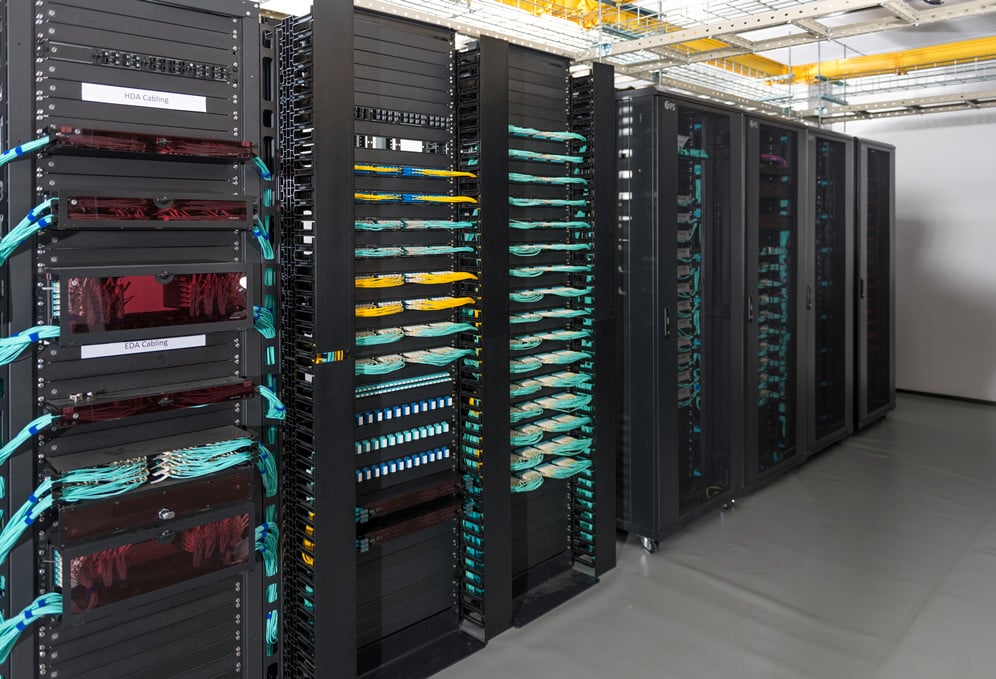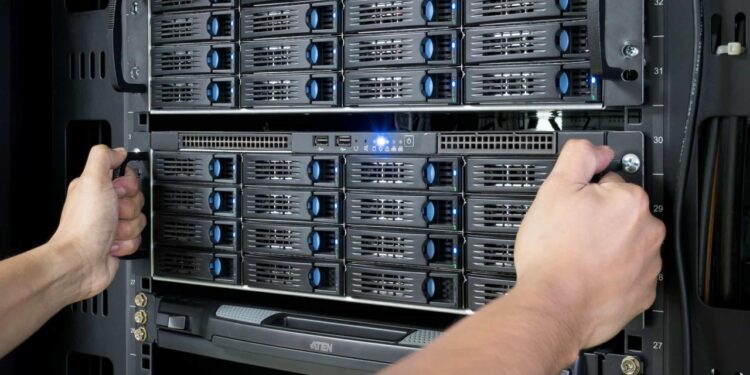In today’s interconnected world, a home server has become a fundamental component for modern digital life. It serves as a central hub for everything from media streaming and file sharing to smart home automation and data backup. However, a server that runs 24/7 can quickly become an energy hog, leading to a significant increase in your electricity bill. The key to a sustainable and cost-effective home server setup lies in a single, critical factor: power efficiency. Building or acquiring a server that is optimized for low-power consumption is not just an environmental choice; it is a smart financial decision that ensures your digital infrastructure is both powerful and affordable to maintain over the long term.
This comprehensive guide is your definitive blueprint for navigating the world of power-efficient home servers. We will explore the core concepts of server energy consumption, review the best low-power hardware options available in 2025, and provide a strategic framework for building a server that is perfectly balanced between performance and energy savings. By understanding the intricate relationship between hardware, software, and your electricity bill, you can construct a home server that is both a digital powerhouse and a model of efficiency.
The Fundamental Concepts of Server Power Consumption

Understanding what makes a server energy-efficient is the first step toward building one. A server’s power consumption is measured in watts (W), and this seemingly small number can add up significantly over the course of a year. The average cost of electricity, combined with a server that runs continuously, can turn a simple project into an expensive liability.
A. Idle Power Consumption: This is the power a server uses when it is running but not actively performing a task. For a home server, which spends most of its life in an idle state, this is the most important metric. A server with a low idle power draw can save you hundreds of dollars on your electricity bill over its lifetime.
B. Load Power Consumption: This is the power a server consumes when it is performing a demanding task, such as transcoding a 4K video or running a complex data analysis script. While important for performance, this metric is less critical for a home server that is not under constant heavy load.
C. The Sleep and Wake-on-LAN States: Modern hardware and software allow a server to enter a low-power sleep state and then “wake up” when needed. However, for a server that needs to be constantly available, this is not a viable option. Therefore, a server’s idle power consumption is the most crucial consideration.
D. The Hardware-Software Relationship: Power efficiency is not just about the hardware; it’s also about the operating system (OS) and the software that runs on it. A lightweight, optimized OS will use less power than a bloated, resource-intensive one.
The Best Low-Power Hardware for Home Servers
Choosing the right components is the single most effective way to build a power-efficient server. Here are the top hardware options to consider in 2025.
A. The Mini PC and Small Form Factor (SFF) Computer
Mini PCs have emerged as a perfect solution for power-efficient home servers. These tiny computers, like the Intel NUC or similar SFF models from brands such as Dell, HP, and Lenovo, offer a surprising amount of power in a small, energy-sipping package.
- Key Features:
- Low Power Consumption: They are designed with mobile-grade processors that consume a fraction of the power of a desktop CPU.
- Small and Quiet: Their compact size and low heat output allow for quiet, fanless or near-silent operation, making them perfect for a home environment.
- Integrated Graphics: Their integrated graphics units (iGPUs) are highly efficient at hardware transcoding, which is a critical feature for media servers like Plex.
- Best For:
- Media streaming and transcoding.
- Home automation hubs (e.g., Home Assistant).
- Lightweight file sharing and data backup.
B. Network Attached Storage (NAS) Devices
For those who want a simple, purpose-built, and highly energy-efficient server, a NAS is the ultimate plug-and-play solution. Brands like Synology and QNAP have dominated this space for years.
- Key Features:
- Purpose-Built OS: They run a simplified, proprietary operating system that is highly optimized for low power consumption and file sharing.
- Hot-Swappable Drive Bays: These allow you to easily add or replace hard drives without turning off the device.
- Power-Efficient Components: They are built with low-power CPUs and components designed for 24/7 operation with minimal energy use.
- Best For:
- Centralized file storage and backups.
- Media sharing for a small number of users.
- Users who prioritize ease of use over customization.
C. The Single-Board Computer (SBC)
For the ultimate in low-power consumption and cost-effectiveness, a single-board computer is the perfect solution for specific, lightweight tasks.
- The Raspberry Pi 5: The latest generation of the Raspberry Pi is a tiny, incredibly efficient computer that uses only a few watts of power. While not as powerful as a mini PC, its low price and minimal energy consumption make it a fantastic option for a variety of tasks.
- Best For:
- Hosting a network-wide ad blocker (Pi-hole).
- Running a home automation platform.
- Serving as a simple, low-power web server.
The All-Important Components
A server is only as good as its components. Choosing the right ones is crucial for balancing performance and power efficiency.
A. The Central Processing Unit (CPU):
The CPU is the single largest consumer of power in a server. Look for CPUs with a low Thermal Design Power (TDP) rating. Processors from Intel’s “T” or “U” series and AMD’s “GE” series are specifically designed for low power consumption.
B. Storage: SSD vs. HDD:
Your choice of storage drives has a significant impact on power usage.
- HDDs (Hard Disk Drives): Traditional spinning platter drives consume a surprising amount of power, especially during spin-up.
- SSDs (Solid-State Drives): SSDs have no moving parts and consume significantly less power than HDDs. They are the ideal choice for an energy-efficient server, especially for the OS and frequently accessed data.
C. The Power Supply Unit (PSU):
An efficient power supply converts electricity from the wall to your server’s components with minimal energy loss. Look for a PSU with an 80 Plus Bronze or higher efficiency rating. A more efficient PSU will run cooler and waste less energy.
D. Cooling:
Proper cooling is not just about preventing overheating; it’s also about energy efficiency.
- Passive Cooling: For mini PCs and SBCs, a fanless case or a large heatsink can be used to cool the system silently and with no power consumption from fans.
- Efficient Fans: If your server needs fans, choose large, low-RPM fans that move a lot of air quietly and efficiently.
The Software Strategy for Power Efficiency

Hardware is the foundation, but software optimization is the key to unlocking true energy efficiency.
A. Operating System (OS):
A lightweight, server-grade OS is a must.
- Linux: A Linux distribution like Ubuntu Server or Debian is highly recommended. It has a small footprint, runs efficiently from the command line, and has a very low resource overhead.
- Dedicated OS: Operating systems like TrueNAS Scale or Unraid are built specifically for storage servers and are highly optimized for low power consumption.
B. The Server’s Role:
Configure your server to run only the services you need. For example, if you are only running a file server, disable any unnecessary services like a web server or a media manager. This reduces CPU usage and lowers power consumption.
C. Virtualization:
Running a single physical server with multiple virtual machines (VMs) is far more energy-efficient than running multiple physical servers. It allows you to consolidate your workloads onto a single, powerful machine.
Building Your Power-Efficient Home Server
Here is a practical guide to putting it all together.
A. Define Your Needs:
First, determine the primary purpose of your server. Is it a simple file server or a media streaming powerhouse? Your needs will dictate your hardware choices.
B. Choose Your Hardware Platform:
Based on your needs, choose between a mini PC, a NAS, or an SBC.
C. Select Your Components:
Choose your CPU, RAM, storage, and power supply based on the principles of power efficiency outlined above.
D. Assemble and Install the OS:
Assemble your server and install your chosen operating system. For a new build, this is the first step before installing any software.
E. Configure for Efficiency:
After the OS is installed, configure it to run as efficiently as possible. Disable unnecessary services and set up your core applications.
Conclusion
The era of the energy-hungry home server is over. Building a power-efficient server in 2025 is not a compromise on performance but a strategic decision that leads to a smarter, more cost-effective, and more sustainable digital infrastructure. A server’s lifespan is a direct result of the effort put into its design and maintenance, and a well-designed, power-efficient server will save you a significant amount of money on your electricity bill over a decade of continuous operation.
The key to a successful build is a holistic approach that balances hardware and software. By choosing low-power components like a mini PC or a dedicated NAS, by opting for energy-efficient drives and power supplies, and by running a lightweight, optimized operating system, you can build a server that is both a digital powerhouse and a model of efficiency. Whether you are a minimalist who wants a tiny Raspberry Pi to run a home automation hub or a media enthusiast who needs a powerful mini PC to transcode 4K videos, the principles remain the same.
Ultimately, a power-efficient home server is a testament to intelligent design. It proves that you don’t have to sacrifice performance for sustainability. It is a living system that, with proper care and attention, will not only meet your needs today but also serve as a reliable, cost-effective, and environmentally friendly foundation for your digital life for years to come.








